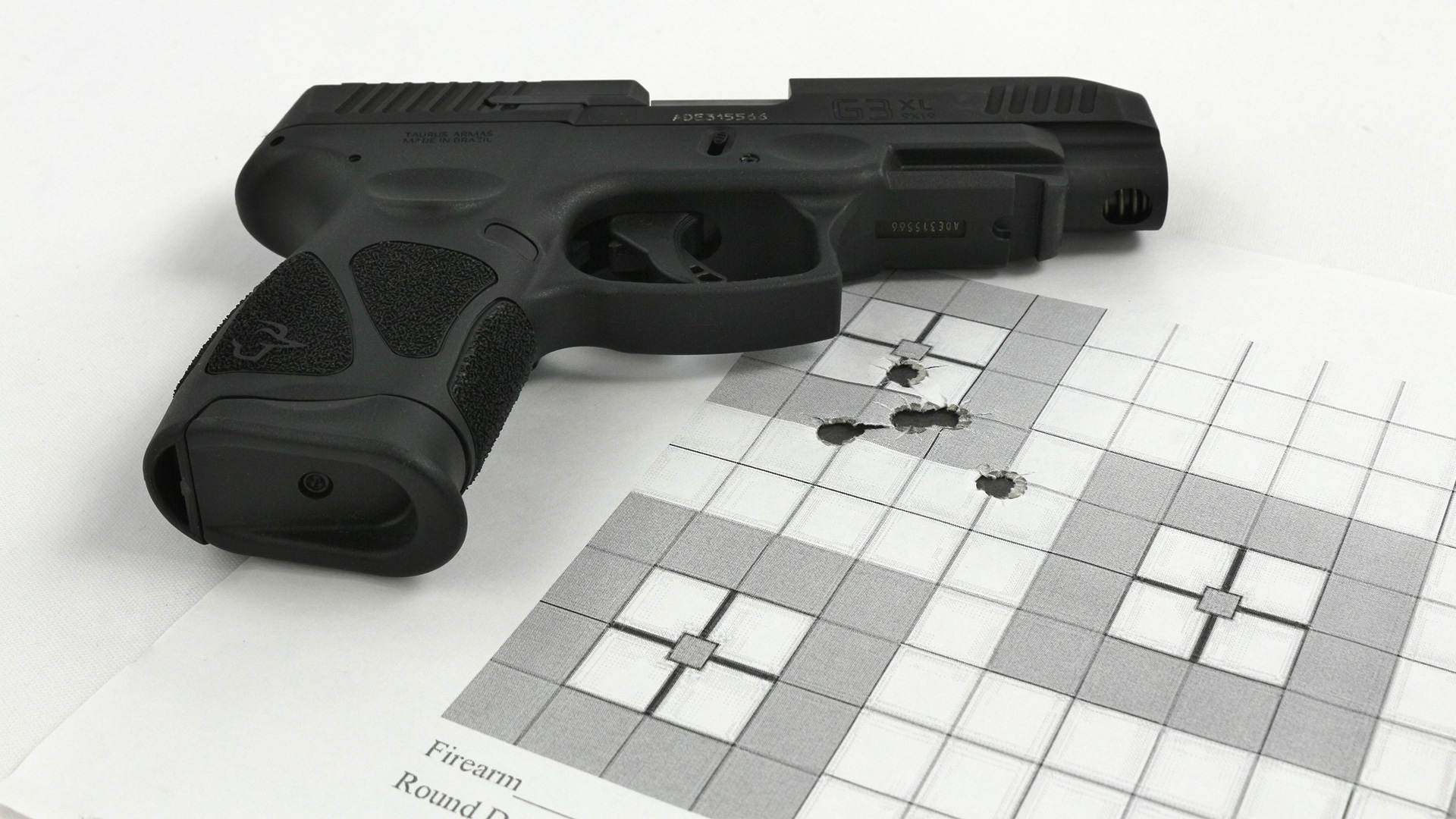
Although I have many book ideas swirling around in my head, one that I keep returning to is about conversations I often have while mingling at cocktail parties. These little gems have opened my eye to several shooting concepts, boldly illustrating that one never knows from where the lesson may come.
I recall a time early in my career when strangers and myself would exchange our respective professions. After mentioning that I was a firearms instructor, they would invariably regale me with a story of their “first-shot success.” Initially, my belief was these stories merely marked the beginning of a superiority contest, which I never engage in. However, after about the fifth one, I started watching my first-time shooters. After rudimentary instruction on sight picture and trigger control, nearly everyone put their first shot dead center on target. More interestingly, subsequent shots wandered all over the place, and the shooters found themselves chasing that initial precision, until they eventually recreated and surpassed it. I have dubbed this phenomenon the “J-shaped” learning process, and to some degree, we all develop the same way.
So, what happened between that first and second shot? It’s simple—the body learned that guns recoil, and their trigger finger learned precisely when that happens. As human beings, we perceive the act of firing a gun as threatening and, as such, execute a suite of motions wrapped around our fight or flight instincts. Imagine if you were holding a firecracker outstretched and somebody lit the fuse. Without having to think, your wrist would flick it away in as fast and short a motion as possible. That’s because your body knows about firecrackers; it doesn’t know guns. Before your first shot, it hasn’t learned to treat a gun like an explosion yet, and it surely doesn’t know where the trigger’s breaking point is yet, either. This changes the moment after that first shot, as your body starts to believe it needs to “flick the explosion away” right when the trigger stops moving. Some may have heard this malady over-simplified as “flinching.” As time goes on, under the guidance of a professional, shooters will eventually learn about this phenomenon, and start to shoot as well as when they didn’t know when to react. With enough practice, they will exceed that level and continue to climb. Again, it’s a “J-shaped” process.
Are you interested in seeing this in practice? Head to the range with a brand-new gun and an old standby that you have trouble shooting accurately. Send 50 to 100 rounds downrange with the gun that you are already familiar with until things start to fall apart. Yes, the “J” lives not only from shooter to shooter, but session to session as well. Once you’ve reached that point, switch over to the gun that you’ve never fired before and watch the magic happen. Continue on, and you’ll see those shots start to drop just like before; the process applies not only to new shooters, but to new guns, too.
Now, I imagine you’re still reading because you want to know how to get to the top of the “J.” A shrewd businessman would merely drop a link to Renaissance Firearms Instruction, but I’ll save you the trip to New York or Pennsylvania and get you started. The solution involves getting your body to fire every shot like your first. Let me elaborate—when you sent your first round downrange, you might have been concerned about the recoil, but you weren’t doing anything (either consciously or subconsciously) to prepare for it. Your trigger finger also rode right through the wall, without any sort of exploration process to determine when that last millimeter would be before the gun went bang, or at least you failed miserably in doing so. Next time you go to the range, load up, build a sight picture, and press the trigger without stepping or feathering the trigger. In other words, once you find the wall, gradually increase pressure without a single stop until the gun fires. Continue breathing, it won’t disturb your shot as much as you might think. Distract yourself by trying to bring the front sight or red dot into as clear a focus as possible, and simply let the gun fire as if it were unexpected.
This retraining process works well by itself, but there are a few tools that you can use to speed things up and shine some light on the muscles involved with your flinch. Mixing in some dummy rounds will show you if you are still “flicking” the gun away, and illuminate the specific parts of your hand or wrist that are getting involved. Once identified, you can relax those areas and put your focus on their movement instead of when the trigger might break. Another great tool is a gun with a ridiculously long trigger press, such as a double-action revolver. Having more distance to travel will give you more opportunity per press to control your hand and continue the motion without stopping.
While the J-process is a natural occurrence, it’s hard to ignore how extraordinarily disparaging it can be. There is no worse feeling than sending a magazine downrange and saying, “What happened to me?” However, with a little work, we can all overcome the human nature that creeps in, and not only get back to where we started, but even exceed expectations. So much for beginner’s luck.



































